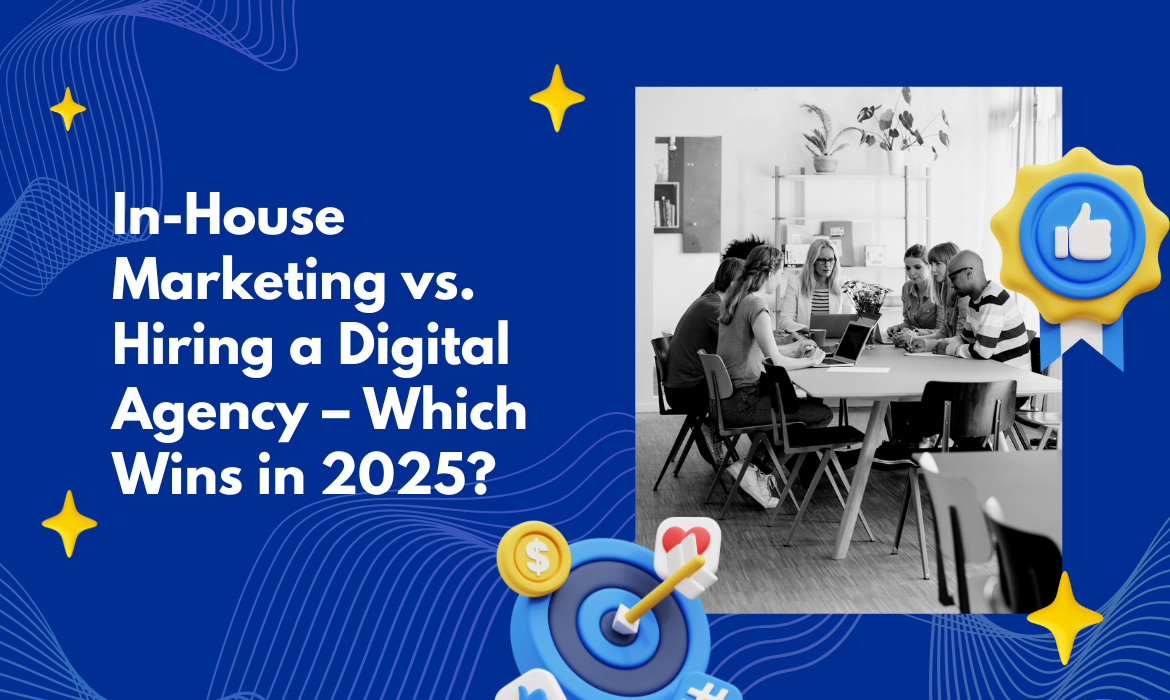
In today’s digital age, a well-executed social media marketing (SMM) strategy is not just for B2C brands flaunting flashy product launches or viral content. For B2B companies, social media offers a powerful platform to establish thought leadership, build brand credibility, and foster meaningful connections with decision-makers.
But unlike B2C, where trends and emotions often drive engagement, B2B success on social media depends heavily on research, relevance, and results.
As we worked on creating a winning social media strategy for Mafatlal — a prominent B2B brand focused on EdTech and digital transformation — we followed a structured, insight-led approach that can serve as a playbook for other B2B brands. Here’s how you can do the same.
1. Start with Competitor Research:
Before you create any content calendar or start ideating campaigns, understand the landscape. Researching competitors gives you a realistic benchmark for what’s working (and what’s not) in your industry.
When we worked on Mafatlal’s strategy, we analyzed leading players in the EdTech and B2B digital transformation space. Here’s what we focused on:
- What kind of content are competitors posting?
Are they sharing case studies, whitepapers, behind-the-scenes glimpses, client stories, or product updates? - How often do they post?
Some B2B brands post 3 times a week, others once a day. Finding that sweet spot for consistency without spamming is critical. - What’s the tone and format?
On LinkedIn, most successful B2B players favor a professional yet conversational tone. Posts often include carousels, infographics, or leadership quotes. - What’s their engagement rate?
Not just likes, but look at the quality of comments and who’s interacting. Are other industry leaders engaging?
This research phase isn’t just about imitation. It helps set the baseline for differentiation.
Pro Tip: Always document 3–4 best-performing competitor posts to use as visual references when pitching your strategy.
2. Align Strategy With Client Goals — Using Market Context:
B2B clients don’t want generic “we’ll post more often” strategies. They want to know: why this content, why now, and how will it help us grow?
Instead of presenting ideas in isolation, we aligned our recommendations for Mafatlal with what was already happening in the market. We showed them:
- What their direct competitors were doing well.
- Examples of trending formats in the EdTech space.
- How their current presence was underleveraged in comparison.
This contextual approach made the strategy not just theoretical, but actionable.
For example, when we proposed a shift to more thought-leadership content, we backed it with examples of how similar posts by competitors had higher engagement and better audience response.
Why it works: Clients are more likely to trust and adopt ideas that are rooted in real-world insights, not assumptions.
3. Build a Strategy That Highlights Brand Strengths:
No two B2B brands are the same, and your content shouldn’t be either.
Once we had competitor insights and market context, we tailored Mafatlal’s social media plan to emphasize what makes them stand out:
- AI-driven tools: We created content showcasing how their tech solutions improve classroom outcomes.
- NEP-readiness: We built posts aligning their offerings with India’s National Education Policy, showing relevance to current discourse.
- Teacher-first approach: We emphasized their human-centric philosophy with testimonials, educator stories, and training highlights.
This kind of positioning isn’t just content marketing — it’s brand storytelling on platforms like LinkedIn, where decision-makers are paying attention.
4. Prioritize the Right Platforms — Especially LinkedIn:
For B2B brands, not all platforms are equal. LinkedIn, by far, remains the most effective for thought leadership, networking, and lead generation.
Here’s how we approached it for Mafatlal:
- Focused on company page optimization.
- Shared leadership content from CXOs to build trust.
- Used carousels and infographics for high-impact storytelling.
- Ensured that posts reflected a professional, insight-rich tone.
Unlike Instagram or Twitter, LinkedIn is less about viral trends and more about value-driven conversations. That’s where B2B brands can shine.
Tip: Repurpose long-form blogs into bite-sized LinkedIn posts, expert quotes, and carousels.
5. Create a System to Showcase Differentiation:
It’s not enough to create content — you need to reinforce how your client stands out constantly.
That means every content strategy or deck you present should include:
- 3–4 real content references from competitors.
- A clear explanation of why your approach is different.
- How each content bucket contributes to specific goals (awareness, engagement, leads, etc.).
For example, we showed Mafatlal how our suggested use of storytelling around teacher training would help build emotional resonance — something their competitors lacked. This kind of contrast builds client confidence in your plan.
6. Keep It Research-First, Always:
B2B social media success doesn’t come from random content ideas or trend-chasing. It comes from staying grounded in insights.
For every client — not just Mafatlal — we now follow a process:
- Start with a deep dive competitor and industry scan.
- Use that to identify opportunities and content gaps.
- Align content themes with brand USPs
- Choose the right platform and adapt the tone accordingly.
- Explain and justify every recommendation with context
Conclusion: B2B Social Media Is About Trust, Not Just Traffic
Creating a winning SMM strategy for B2B brands means going beyond surface-level content. It requires strategic thinking, sharp research, and tailored storytelling.
- What we’ve learned from our work with Mafatlal is this:
- Competitor research gives you a clear picture of what to do — and what to avoid.
- Contextualizing your strategy with market insights builds client trust.
- LinkedIn is your best friend for B2B growth.
- Highlighting unique strengths makes your content stand out.
- A research-first mindset ensures long-term success.
So, whether you’re building a B2B strategy for a tech firm, an educational brand, or an enterprise SaaS provider, follow this approach and you’ll have a plan that doesn’t just check the boxes, but delivers real results.
Ready to Take Your B2B Brand’s Social Media to the Next Level?
At AimGlobal Digital, an B2B Marketing Agency in Bangalore, we specialize in creating research-backed, insight-driven social media strategies tailored for B2B brands across industries. Whether you’re looking to boost thought leadership, grow a LinkedIn presence, or build a content engine that converts, we’re here to help.
Let’s build your brand’s social media playbook.
Contact AimGlobal Digital Today and let’s grow strategically.


![Turning Clicks into Conversions!We’re proud to showcase our latest success story — Furnipark.com, a complete e-commerce transformation project crafted to elevate the online furniture shopping experience.From strategy and UX design to Shopify integration and automation, our goal was simple — build a high-performing website that drives real business growth.💡 Clean UI. Fast performance. Seamless checkout.
That’s how we help brands like Furnipark scale smarter online.📩 Looking to build or revamp your e-commerce website?
Let’s create a digital experience your customers will love.👉 Reach out at sales@aimglobal.digital
or visit www.aimglobal.digital[e-commerce website development, Shopify website, digital transformation, UI/UX design, conversion optimization, website redesign, performance marketing, online furniture store, web development agency, Aim Global Digital]](https://aimglobal.digital/wp-content/plugins/instagram-feed/img/placeholder.png)




